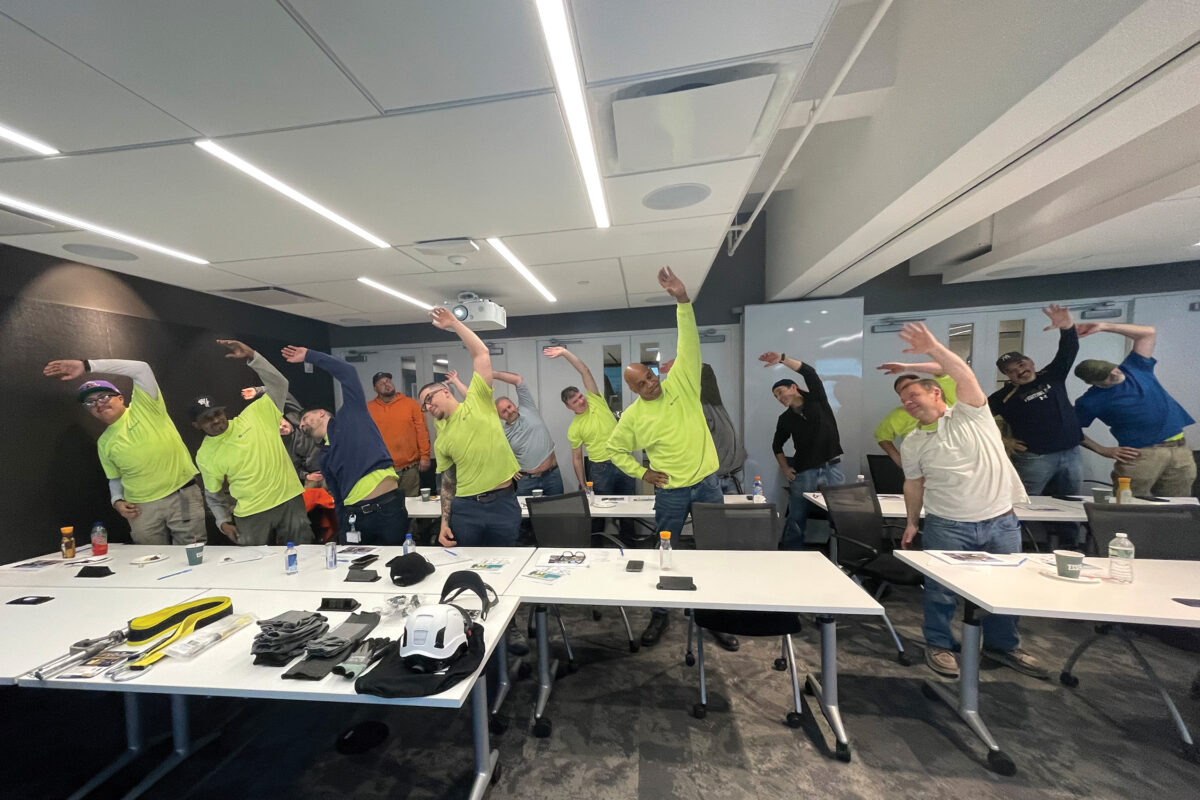Building green isn’t just a trend—it’s a responsibility. In 2021, several STOBG companies signed on to the Contractor’s Commitment, a pledge created by contractors for contractors, to set sustainability targets and measure their progress—divided into Good, Better, or Best tiers. Over the last two years, those early signatories were able to provide valuable input to make the Commitment even stronger and more impactful.
“Being one of the early signatories for the Contractor’s Commitment has been so critical for BCCI,” says BCCI Construction senior director of marketing, Cynthia Gage. “You’re in the room with a project team and you’re able to have real-life, on-the-ground conversations about sustainability and what makes a difference in construction.”
By pledging to the Contractor’s Commitment, BCCI, Ajax Building Company, Abbott Construction Los Angeles, and Structure Tone New York joined a larger movement to impact the sustainability of building projects and inspired others, including subcontractors and clients, to follow suit.

“We initially proposed the Contractor’s Commitment to Structure Tone New York because New York’s best practices were in most alignment with what it entails,” says Jennifer Taranto, STO Building Group vice president of sustainability. “We received plenty of support from our president, Mike Neary, and we saw that this would be meaningful for our clients.” Two years into the Commitment, and the STOBG teams have seen progress and efficiencies in several facets of construction.
WASTE DIVERSION
Waste diversion is one area where all four STOBG companies report clear success. “Many of the goals at the Good tier, including waste management, are already what we require of our projects,” says Teresa Fait, project manager at Abbott Construction in Los Angeles. “The Commitment gives us added framework for educating and tracking.”
Similarly, BCCI was already complying with California’s stringent sustainability requirements, and they were empowered by the Contractor’s Commitment to take things a step further and build more waste management tactics into each stage of a project. According to Priyanka Jinsiwale, project manager of sustainability and ESG at BCCI, the company is committed to standardizing waste diversion practices on all of their projects.
“Ensuring early engagement is conducted on all projects and integrated into our project workflow is key since these metrics need to be tracked consistently,” notes Jinsiwale. “We’ve created several implementation tools and templates to help.”
Structure Tone NY uses on-site source separation methods for select waste streams to increase the landfill diversion rate, rather than commingling all of the discarded materials in a single dumpster. “Although there are space limitations on our jobsites, we’ve found tremendous success with our closed-loop gypsum recycling efforts,” says Ryan Hughes, Structure Tone NY sustainability manager.
Local wallboard manufacturers such as USG and CertainTeed/Saint-Gobain take back the site-separated drywall trim scrap and use it as feedstock to create new products. “We’re also separating wood and metal on select projects and working with partners to recycle our carpet scraps as another way to contribute to the circular economy,” Hughes adds.
By salvaging, donating, and reusing existing materials even before demolition, the Structure Tone team was able to achieve the Commitment’s Better tier. NYC also has the benefit of using Cooper Recycling, a nearby materials recovery facility with an RCI-certification that demonstrates best-in-class sorting practices.
CARBON TRACKING
Although carbon tracking was not a new task for Ajax, applying an anti-idling practice on all sites was a recent change for the company. Ajax’s anti-idling policy mandates that all engines—from passenger vehicles to construction equipment—must be turned off when not in use. “Some people had a habit of getting out of their truck and running into the trailer for a meeting while the truck’s still running,” says Rowdy Francis, Ajax quality manager. “We’ve now addressed that. It’s a small thing but it reminds everyone to be more cognizant.”
BCCI also took their efforts on carbon tracking up a level since signing the Commitment. The team proactively began analyzing their baseline and identified areas of improvement“. Although 30% of our projects are required to be tracked under the guidelines of the Contractor’s Commitment, BCCI is aiming to track 80% of our projects,” says Jiniswale.
As a new service offering, Structure Tone NY has also begun to track embodied carbon for projects seeking to measure their environmental impacts associated with materials and worker commutes.

UTILITY USAGE
Structure Tone has implemented various measures to monitor and reduce their utility consumption, but tracking and documenting those efforts at first posed a challenge. The team has since found an innovative solution to help, says Hughes. WASHBOX monitors temporary water use on-site and reuses the greywater during construction to reduce overall consumption.
Abbott also leverages partners to find new and improved tracking methods. “We are using the Contractor’s Commitment tracking template that a partner company showed us,” says Fait. “Each category has a field where project teams can provide feedback on how the goals were achieved—was it difficult, was there a cost impact, etc.”
WORKER WELLNESS
With increasing global attention to mental health and wellness and the encouragement of the Contractor’s Commitment, all four STOBG signatories have made jobsite wellness a priority. Each company has regular and frequent wellness\ breaks—whether educating teams to stretch and flex before work or promoting health habits such as taking a break or staying hydrated. Utimately, the impact of signing the Contractor’s Commitment illustrates how each business unit is working to consistently implement best practices—which reinforces our Quality 360º program, striving to deliver the highest quality in everything we do.

Contractors who sign the commitment pledge to meet a series of goals in five categories:

Carbon Reduction
How well a contractor
reduces carbon emissions

Jobsite Wellness
Fostering wellness (clean air, nourishment, mental health, etc.) for anyone working in jobsite offices

Waste Management
Promoting waste diversion,
whether seeking green
building certification or not

Water Management
Assessing risks to prevent
water pollution

Material Selection
Assessing and
selecting healthy and
sustainable materials
